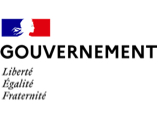Digital healthcare in Sweden
Key figures
10M
inhabitants
21
regions
10.9% of GDP
dedicated to healthcare spending in 2019
The Swedish healthcare system is divided into three administrative levels
The healthcare system is public and covers all Swedish residents regardless of nationality.It is 85% financed by taxes collected at regional level, and supplemented by direct transfers from the federal government.
- The national government sets principles, guidelines and decides policy priorities for health and medical care. This is done through laws and ordinances, or agreements with the Swedish Association of Local Authorities and Regions.
- The 21 regions are responsible for organizing health and medical care so that all citizens have access to good care.
- The 290 municipalities are responsible for care of the elderly and people with physical and mental disabilities, help and services for people who have completed therapy and been discharged from hospital, and school health care.
An innovation strategy for the digital health sector
Sweden has been named theEU's most innovative countrybrought about by its innovation climate, which combines a highly developed system of public-private collaboration with great international openness. It invests $1.22 billion a year in healthcare IT. Every region uses advanced electronic medical records, and 99% of prescriptions are electronic. Remote monitoring of patients is also growing, supported by regional governments, local businesses and a technophile population.
The French and Swedish governments have established a French-Swedish strategic partnership for innovation , renewed in January 2024 by the respective heads of state. One of the areas of cooperation is "Healthcare innovation". Driven by players such as Business Sweden, France and Sweden will continue to work together to strengthen the competitiveness, resilience and innovative capacity of the European Union's healthcare and life sciences sectors.
How do you access the Swedish market?
1. Contact national or regional investment promotion agencies
- Business Sweden is the national investment agency responsible for welcoming international companies wishing to enter the Swedish market.
- Invest in Skåne is Skåne's regional investment agency and has regional expertise in supporting healthcare technology companies.
- The Gothenburg region runs the Invest in Gothenburg agency, which helps life science companies establish themselves in the western Swedish region.
- Stockholm Business Region is the investment promotion agency that helps companies in the life sciences sector establish themselves in the regions surrounding Stockholm-Uppsala.
2. Contact Vinnova, the Swedish innovation agency
Vinnova, the Swedish Innovation Agency, isthe government's expert authority on innovation policy and funds research and innovation on a need basis. It facilitates and coordinates the cooperation of public and private entities serving the government.
Vinnova operates with strategic innovation programs for each of the sectors Sweden prioritizes. Medtech4Health is the program responsible for funding, gathering and organizing this effort. It's a good point of contact to be connected to an academic hub and to access the Swedish market. It's through Vinnova that healthcare organizations and innovators meet
3. Get involved in local e-health innovation groups
In Sweden, eHealth is supported by a network of innovation hubs that bring developers together and foster the incubation of new healthcare technologies. The main eHealth innovation hubs are:
- HealthTech Nordic : Nordic community of HealthTech startups
- MedTech4Health Start : Strategic innovation program responsible for funding, unification and organization
- Health Data Sweden : Sweden's incubator for new digital health technologies
There are also university startup incubators:
4. Regions and municipalities, responsible for supply
It is the 21 regional authorities and 290 local authorities that purchase medicines and medical devices. However, their decisions are coordinated at national level and guided by recommendations from the Medical Products Agency and the Dental and Pharmaceutical Benefits Agency.
5. Lakemedelsverket: the national medicines agency
The Lakemedelsverket is the health authority responsible for the evaluation of medical devices, including digital medical devices: it issues licenses allowing the marketing of a healthcare product.
6. The Tandvårds och läkemedelsförmånsverket (TLV) for reimbursement.
The TLV sets prices and reimbursement rates for each product before it goes to market. The first regulations governing market access for digital health solutions in Sweden are those of the Nordic Digital Health Program and Evaluation Criteria (NordDEC), adopted in June 2022 in Helsinki. This accreditation system has also been adopted by Denmark, Norway, Finland and Iceland. A product accredited by one country is accredited in all five, provided it complies with NordDEC standards.
Government authorities and platforms
They are the guarantors of smooth operation and cooperation in the healthcare system
.The associations
They bring companies together and facilitate their incubation
.Support and innovation initiatives
They bring together and facilitate the incubation of new technologies
.Training
Universities and their hubs that train and support digital healthcare innovations
S'exporter à l'international - Zoom sur la Suède


